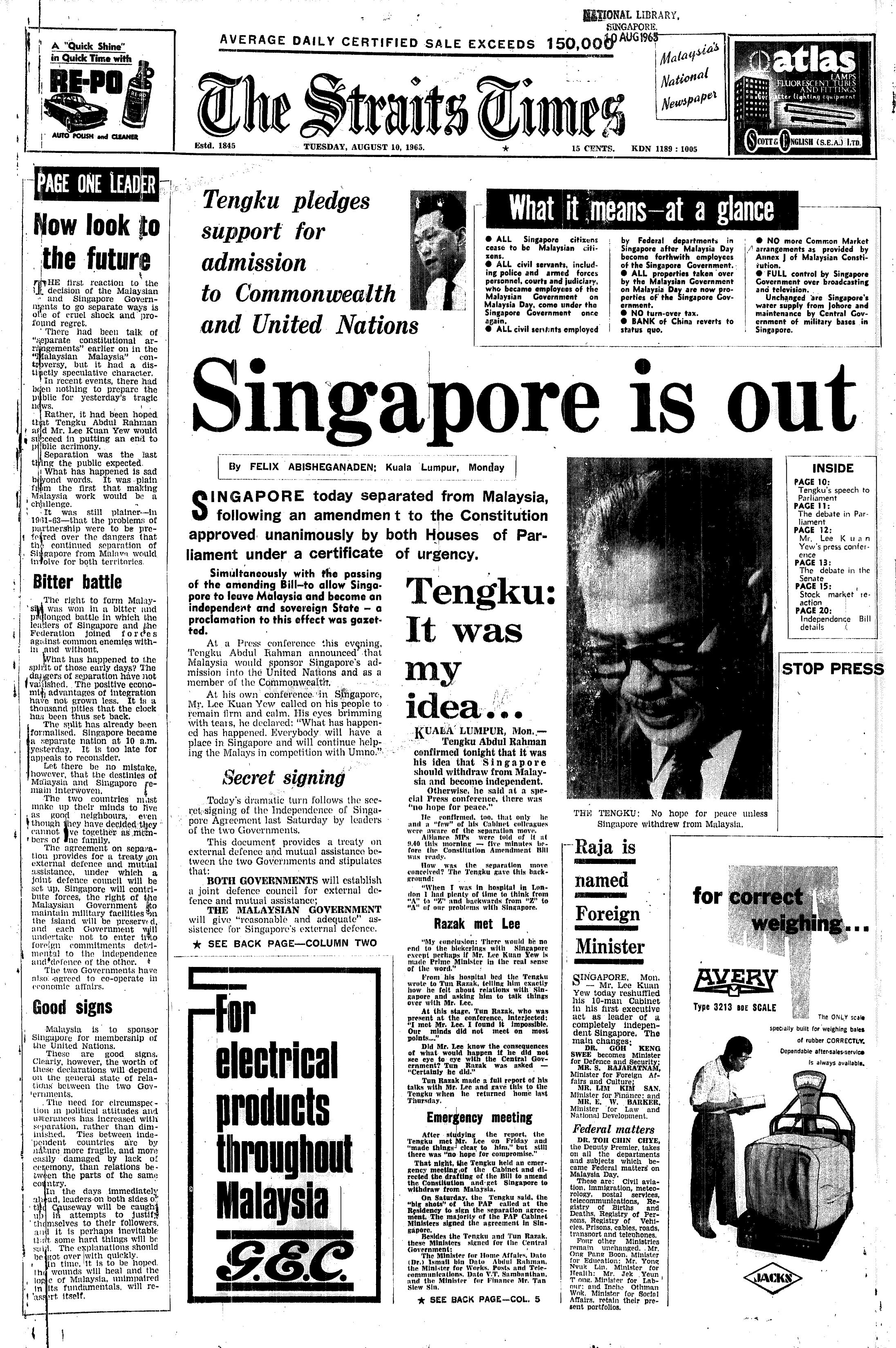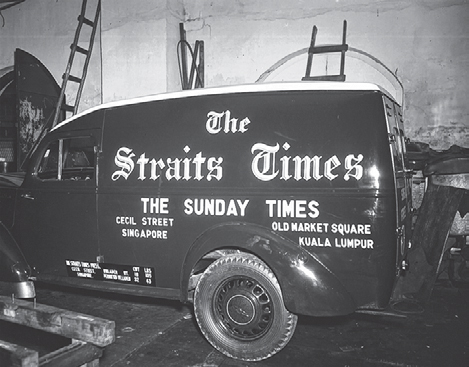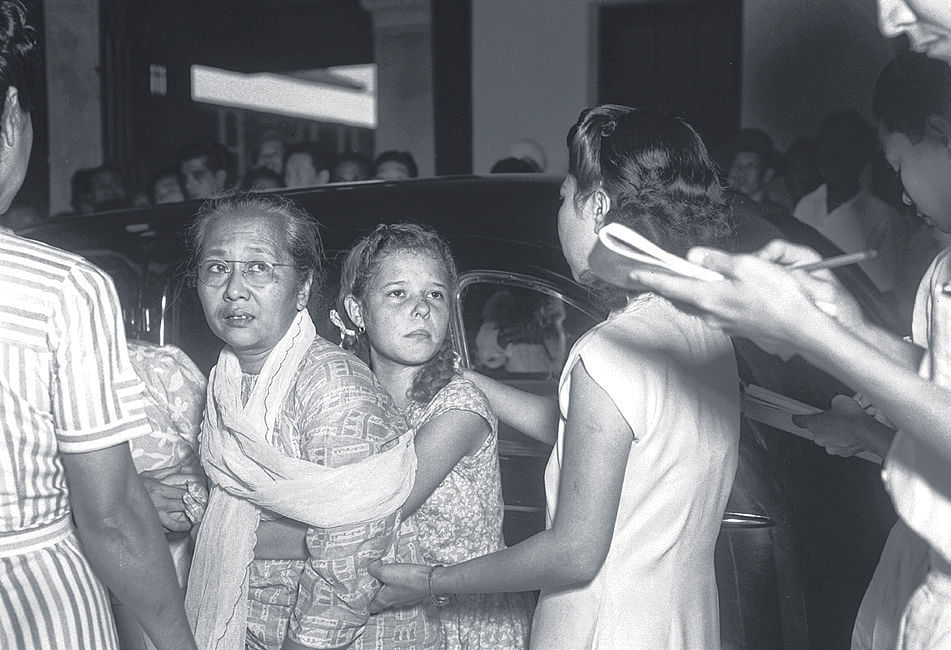LIVING HISTORY
Independent times
Stock exchange rally spells optimism for fledgling state
Sign up now: Get ST's newsletters delivered to your inbox
Follow topic:
It came like a thunderclap during the very first hour of trading, when jittery traders on a hair trigger are looking for direction - when no news is good news. The sudden, dramatic announcement of Singapore's exit from Malaysia set off a bout of nervous selling at the Singapore stock exchange.
That much was no surprise.
The surprise lay in the speed of the turnaround: By afternoon, the market was already "mildly optimistic" and significant buying was seen. By evening, hundreds of thousands of shares had changed hands. "It was the most active day on the exchange this year," The Straits Times reported on Aug 10, 1965. "By the end of the day the trading rooms had recorded 646,900 shares traded. That was well over twice the total recorded on the most active days of the previous week."
That report appeared on Page 15.
Page 1, however, was almost entirely consumed by the political event. "Singapore is out", cried the main headline. It sounded almost forlorn, like a dismissal, the phraseological equivalent of a door slammed shut.

It was a different world a few pages down. The economy writers might as well have been reporting on a different country. A new wave of confidence had inexplicably deposited the priceless gem of optimism on the exchange. They coined a name for it: the independence boom. And it was building.
By Day 2, the "buying wave" had made it to Page 1 of The Straits Times.
"Twice during the day it was necessary for officials to suspend trading to allow brokers' clerks to clear the avalanche of contracts," said the report headlined "Exchange booms on Singapore's independence".
The unexpected rally was something of a spectacle, riveting because of the contrast thrown up by other dramatic events in the public eye, like Prime Minister Lee Kuan Yew's press conference - called three hours after the Separation became a reality. Mr Lee showed steely resignation as the cherished merger with Malaysia came undone, yet could not keep stop the tears as he declared: "What has happened has happened. But be firm and calm."
The stock exchange, set up in 1930, held not only firm and calm but displayed signs of exuberance. In the days that followed, it effectively became the first Singaporean institution to embrace the new fledgling state and declare its economic viability. It did that in the most resounding way possible: through the interplay of free market forces.
"A larger crowd than has been seen for a very long time packed the Singapore public gallery to watch exchange clerks desperately trying to keep bids, offers and business done up to date on the board," reported The Straits Times on Aug 11, 1965.
"Brokers clerks shouted themselves hoarse and about 11am, several brokers' representatives in the trading room found it necessary to call on their offices for reinforcements.
"Turnover reached a level not experienced since the boom days of 1963."
One obvious reason was Mr Lee's unambiguous statement, during his press conference, that Singapore was willing to trade with anyone, capitalist or communist, friend or foe. "We are prepared to trade with anybody. Including Russia, China and even Indonesia. If they want to trade with us - just trade," he was reported as saying by The Straits Times.
Indonesia was pursuing the Konfrontasi policy of violence against the Malaysian Federation from which Singapore had been ejected.

1947
DELIVERY VANS
To speed up delivery in Kuala Lumpur and outlying areas, The Straits Times buys a fleet of delivery vans. An early edition of the paper is printed at 9pm and delivered by van to Kuala Lumpur for distribution the next day, while a later edition is distributed in Singapore and Johor.

1950
MARIA HERTOGH
The Straits Times is held partially responsible for the events that led to the outbreak of the Maria Bertha Hertogh riots.
From that point on, the newspaper adopts a policy of exercising caution when it comes to issues of racial and religious sensitivities.
The newspaper experiences a dramatic rise in circulation and profits, and chooses to go public to raise funds for expansion. It is listed on the Singapore Stock Exchange as Straits Times Press Limited.

